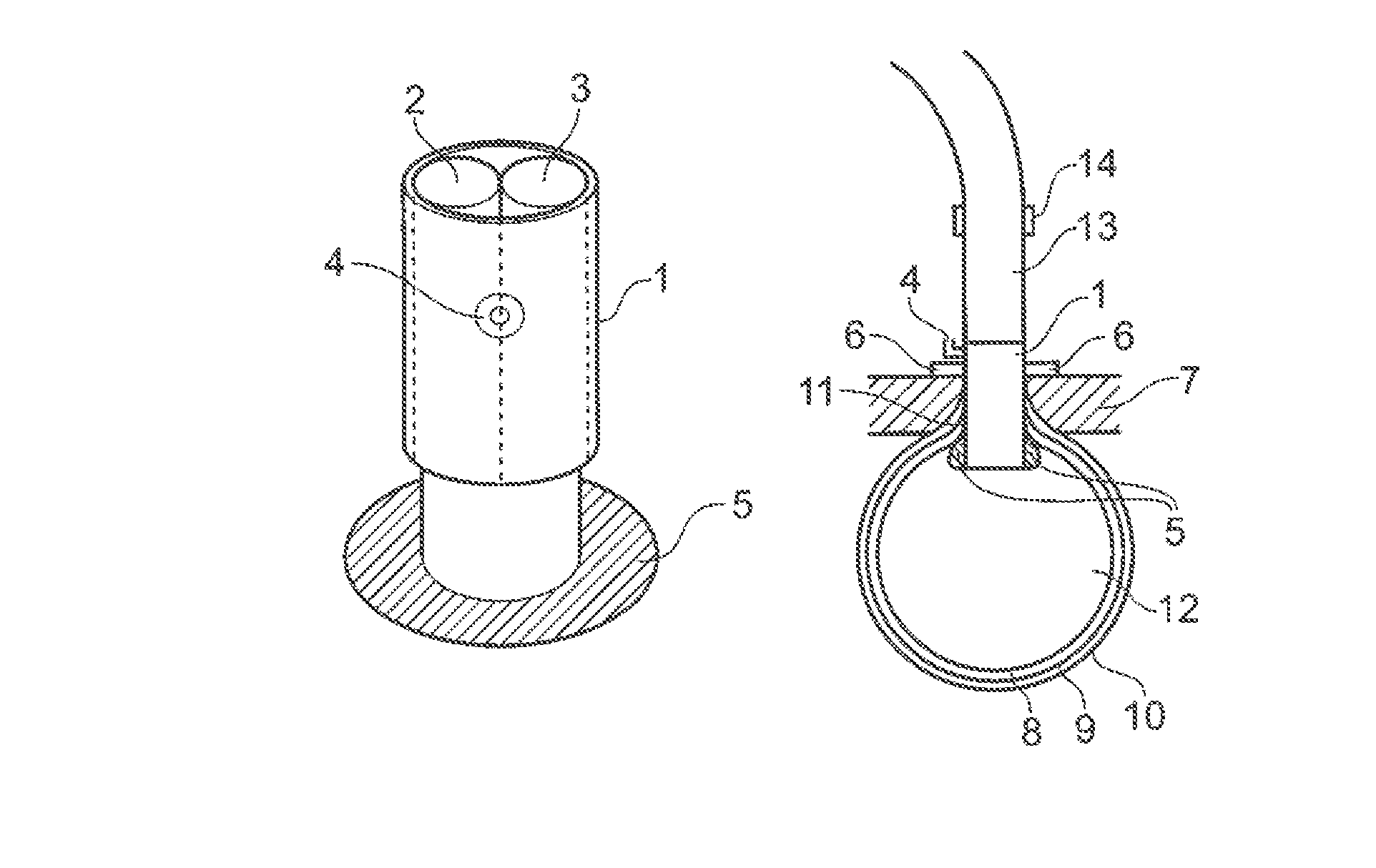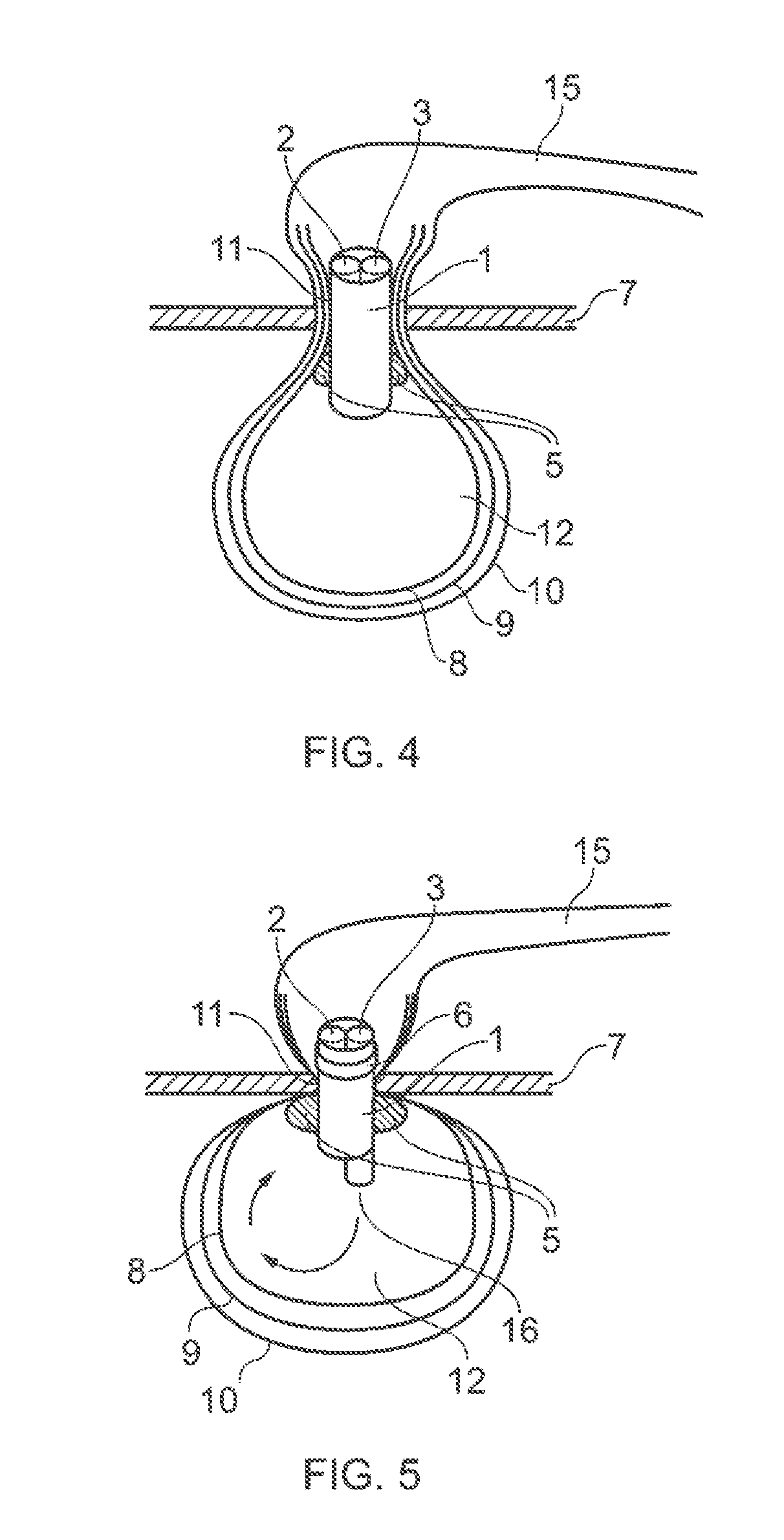Laparoscopic surgery
a laparoscopic surgery and laparoscopic technology, applied in the field of laparoscopic surgery, can solve the problems of reducing the effect of laparoscopic surgery, and reducing the advantages of laparoscopic surgery
- Summary
- Abstract
- Description
- Claims
- Application Information
AI Technical Summary
Benefits of technology
Problems solved by technology
Method used
Image
Examples
Embodiment Construction
)
[0056]FIG. 1 shows the tubular housing 1 of a laparoscopic port, through which there are two channels, 2 and 3. The housing 1 is oval in cross section, with a largest diameter of around 20 cm. The housing has an insufflation nozzle, 4, at its proximal end which is in fluid communication with the inflatable cuff, 5. The locking ring 6, shown in FIG. 2, can be passed over the proximal end of the housing 1 and secured next to the skin 7, as shown in FIG. 3. The function of the port is to make a watertight seal around the incision, to hold the bag in place and allow to access for the morcellator, tools for morcellation such as the nephroscope and irrigation tubes.
[0057]FIGS. 3, 4 and 5, show the laparoscopic bag of a preferred embodiment of the present invention with inner layer 8, middle layer 9, and outer layer 10. A bag having 2, or 4 or more layers can also be used in the method of the invention.
[0058]In FIGS. 3, 4 and 5, the laparoscopic port housing 1 is through the skin 7 of a p...
PUM
 Login to View More
Login to View More Abstract
Description
Claims
Application Information
 Login to View More
Login to View More - R&D
- Intellectual Property
- Life Sciences
- Materials
- Tech Scout
- Unparalleled Data Quality
- Higher Quality Content
- 60% Fewer Hallucinations
Browse by: Latest US Patents, China's latest patents, Technical Efficacy Thesaurus, Application Domain, Technology Topic, Popular Technical Reports.
© 2025 PatSnap. All rights reserved.Legal|Privacy policy|Modern Slavery Act Transparency Statement|Sitemap|About US| Contact US: help@patsnap.com



